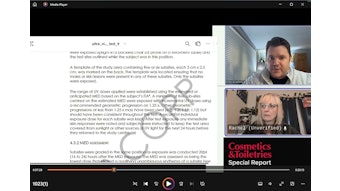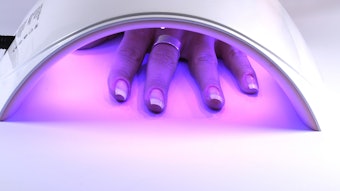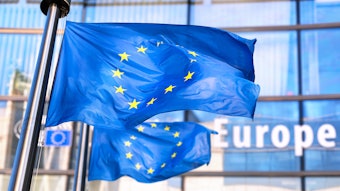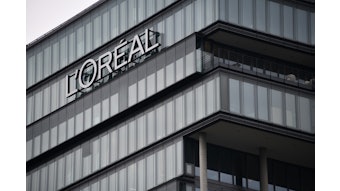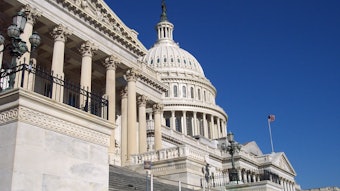
Asia-Pacific saw major cosmetic regulatory updates in mid-2025, including China's IECIC reforms, Macao's mercury ban and Taiwan's spray cosmetic labeling. ASEAN also gave ingredient updates and Vietnam streamlined its processes. Following is an overview; see previous updates from January to June 2025 and Nov/Dec 2024.)
This article is only available to registered users.
Log In to View the Full Article
Asia-Pacific saw major cosmetic regulatory updates in mid-2025, including China's IECIC reforms, Macao's mercury ban and Taiwan's spray cosmetic labeling. ASEAN also gave ingredient updates and Vietnam streamlined its processes. Following is an overview; see previous updates from January to June 2025 and Nov/Dec 2024.)
From late June to mid-July 2025, several Asia-Pacific regions made a series of notable regulatory updates. These include reforms to China’s IECIC system and guidance on the determination of new cosmetic ingredients, Macao’s mercury product ban, Taiwan’s labeling guidelines for spray cosmetics, ASEAN’s updated ingredient lists and Vietnam’s streamlined product notification and sample import process. The following provides a concise overview of these key developments.
Chinese Mainland: IECIC 2025 Reform
On June 24, China’s National Medical Products Administration (NMPA) announced a major reform1 to the Inventory of Existing Cosmetic Ingredients in China (IECIC),2 introducing a dual-list structure and a dynamic adjustment mechanism aimed at further standardizing cosmetic ingredient management. Under the new framework, the IECIC is split into two distinct parts.
IECIC I: IECIC I serves as an optimized and updated version of the 2021 edition, covering ingredients that have been used in cosmetics manufactured or sold within China. Compared with the 2021 edition, several updates have been made to IECIC I.
- The Highest Historical Use Concentration field has been removed in line with recent changes to China’s cosmetic safety assessment requirements.
- Additionally, the standardized names (Chinese, INCI or English) for seven ingredients have been clarified.
- And notes for 53 ingredients have been revised per the latest Safety and Technical Standards for Cosmetics (STSC).3
IECIC II: IECIC II, newly established under the reform, includes new cosmetic ingredients (NCIs) that have completed registration or notification procedures and passed a three-year safety monitoring period without any safety concerns. The first two ingredients officially added to IECIC II are: acetylneuraminic acid and beta-alanyl hydroxyprolyldiaminobutyroyl benzylamide.
This dual-list approach establishes a formal transition pathway for NCIs, supporting their integration into the existing regulatory system.
To enhance transparency and responsiveness, the NMPA has also introduced a dynamic adjustment mechanism. Rather than releasing periodic announcements, all future updates to the IECIC — including additions, deletions and corrections — will be published directly on the NMPA’s IECIC Query Pagea. This approach allows industry stakeholders and the public to access the most up-to-date information in a timely and convenient manner.
Chinese Mainland: Draft Cosmetic Standards
On June 24, China’s National Institutes for Food and Drug Control (NIFDC) released nine draft cosmetic standards for public consultation, with feedback open until July 15.4 These drafts cover a wide range of technical and testing areas relevant to cosmetic ingredients and product safety.
- General Principles for Physical and Chemical Testing Methods
- Determination of Cannabidiol (CBD) and 5 Other Kinds of Components in Cosmetics
- General Technical Requirements for Biotechnology-derived Ingredients
- General Technical Requirements for Plant Origin Ingredients
- Cosmetic Ingredients — Centella Asiatica Extract
- Cosmetic Ingredients — Copper Tripeptide-1
- Cosmetic Ingredients — Acetyl Hexapeptide-8
- Skin Sensitization — Local Lymph Node Assay: BrdU-Flow Cytometry Method (LLNA: BrdU-FCM)
- Toxicokinetics Test Method
Subsequently, on July 3, the NIFDC issued an additional set of three draft standards for public comment, open until July 21.5 These include the Human Skin Patch Test, Cosmetic Safety In-use Test and Cosmetic Safety in Long Use Test. Together, these drafts reflect China's ongoing efforts to refine and expand its technical framework for cosmetic ingredient evaluation and product safety testing.
Chinese Mainland: NCIs Determination Guides
On June 24, the NIFDC officially issued and implemented two finalized guidance documents: the Guidelines for Research and Determination of Safe Use History of New Cosmetic Ingredients (Trial) and the Guidelines for Research and Determination of Safe Consumption History of New Cosmetic Ingredients (Trial).6 These were released alongside a corresponding Q&A to aid interpretation and application.
The Safe Use History Guidelines apply to the evaluation of new cosmetic ingredients (NCIs) under Situation 3 and Situation 4 — specifically, low-risk NCIs and medium/high-risk NCIs, respectively, with more than three years of safe use in cosmetics marketed overseas. The document outlines the scope of application, general principles, basic requirements for evidence of safe use, formatting of supporting materials, and corresponding safety assessment requirements.
The Safe Consumption History Guidelines are intended for NCIs falling under Situation 5, which involves ingredients with a history of safe consumption. The guideline is structured into six parts: an overview, application scope, general principles, basic requirements for consumption history documentation, common types of supporting materials and safety assessment requirements.
Macao SAR: Mercury-added Products Ban
On June 16, the Macao Special Administrative Region issued the Chief Executive's Order No. 109/2025 announcing a ban on the import, export and transshipment of 14 mercury-added products listed under the Minamata Convention on Mercury and its subsequent amendments.7 The ban will take effect on Jan. 1, 2026. Among the prohibited items are mercury-added cosmetics including skin-lightening soaps and creams.
The order allows limited exemptions. Eye-area cosmetics containing mercury as a preservative are permitted only when no safe and effective alternatives exist. Additional exemptions apply to mercury-added products used for research, instrument calibration, or as reference standards.
Taiwan: Spray Cosmetics Labeling Guide
On June 23, Taiwan’s Food and Drug Administration (TFDA) released the Guidelines on the Safe Use of Spray Cosmetics.8 Although not legally binding, the document is intended to serve as a reference for industry stakeholders when labeling spray cosmetic products to enhance consumer safety.
According to the guidelines, spray cosmetics refer to products dispensed in spray form, either through pressurized or non-pressurized mechanisms. To mitigate potential risks during use and storage, the TFDA provides specific precautionary labeling instructions in Chinese, emphasizing that these should be applied alongside any other relevant labeling requirements mandated by existing regulations.
For clarity and usability, the precautionary labeling items are divided into two categories.
Pressurized spray warnings: The first category applies specifically to pressurized spray products and includes warnings such as: avoid continuous spraying on the same area to prevent skin “frostbite;” keep away from flames, heat or power sources during use; avoid prolonged exposure to sunlight or high temperatures (e.g., inside a vehicle); and do not puncture or incinerate the container. Equivalent expressions with the same meaning may be used in labeling.
Pressurized and non-pressurized precautions: The second category covers both pressurized and non-pressurized sprays. These products should carry precautionary labels advising users to maintain a proper distance from the application area, avoid contact with eyes and mucous membranes, ensure adequate ventilation during use to prevent inhalation, and supervise children during use. Products should also be kept out of reach of children.
ASEAN: Ingredient List Updates
From April 23 to 24, the 41st ASEAN Cosmetic Scientific Body (ACSB) meeting was held, resulting in several important amendments to the ingredient annexes of the ASEAN Cosmetic Directive (ACD).
- Annex II List of Prohibited Ingredients: Two new substances — trimethylolpropane triacrylate (CAS No. 15625-89-5) and phenacetin (CAS No. 62-44-2) — were added to the list of banned ingredients. Additionally, the existing entry for 2-ethylhexanoic acid was revised to 2-ethylhexanoic acid and its salts, broadening the scope of the ban. The country-specific exemption for benzophenone ("Except Thailand") was also removed, making the prohibition applicable across all ASEAN member states.
- Annex III List of Restricted Ingredients: The use scope of salicylic acid was modified.
- Annex VII List of Permitted UV filters: Updates were made to the usage requirements for Homosalate (INN).
Following these regional decisions, on July 14, Malaysia’s National Pharmaceutical Regulatory Agency (NPRA) issued Circular No. 1/2025 Information on the Updated Status of Ingredients in the Annex of the Guidelines for Control of Cosmetic Products in Malaysia.9 The circular adopts several of the same ingredient changes, including the prohibition of trimethylolpropane triacrylate and the updated restrictions on 2-ethylhexanoic acid and salicylic acid, aligning Malaysia’s regulations with the outcomes of the 41st ACSB and ASEAN Cosmetic Committee (ACC) meetings.
Vietnam: Cosmetic Management Regulation Updates
On July 3, Vietnam’s Ministry of Health (MoH) released Decree 34/2025/TT-BYT, amending and supplementing certain provisions of Circular 06/2011/TT-BYT on Cosmetic Management.10
Key updates include the formal recognition of the National Public Service Portal as an official channel for submitting cosmetic product notifications. The decree also clarifies signature requirements, explicitly accepting both electronic signatures and digital signatures for online submissions.
Significant changes were made to the procedure for importing cosmetic samples intended for research or testing. Under the revised process, submissions of the updated Appendix 14-MP are now directed to provincial-level health agencies instead of the Drug Administration of Vietnam. Submissions may be made either online or in person, with a stipulated review period of three working days.
These amendments came into effect on August 18, marking a step forward in streamlining cosmetic regulatory processes in Vietnam.
Conclusion
The recent regulatory developments across Greater China and ASEAN reflect a strong focus on enhancing cosmetic safety, regulatory clarity and digital modernization. From Macao’s mercury ban and Taiwan’s spray labeling guidance, to ASEAN’s updated ingredient lists and Vietnam’s streamlined notification procedures, authorities are prioritizing consumer protection and administrative efficiency. Stakeholders should closely monitor implementation timelines and ensure timely adjustments to compliance strategies to meet evolving regulatory expectations and maintain market access.
Footnotes
a Adjustments to the Catalogue of Used Cosmetic Ingredients: https://hzpsys.nifdc.org.cn/hzpGS/ysyhzpylml
References
- China’s National Medical Products Administration (NMPA). (2025, Jun 24). Announcement of the NMPA on Matters Concerning the Management of the Inventory of Existing Cosmetic Ingredients in China (No. 61 of 2025). Available at: https://www.nmpa.gov.cn/xxgk/ggtg/hzhpggtg/jmhzhptg/20250624153604180.html
- ChemLinked. (2021, Apr 30). Inventory of Existing Cosmetic Ingredients in China. Available at: https://cosmetic.chemlinked.com/database/view/1247
- ChemLinked. (2015, Dec 23). Safety and Technical Standards for Cosmetics 2015. Available at: https://cosmetic.chemlinked.com/database/view/168
- China’s National Institutes for Food and Drug Control (NIFDC). (2025, Jun. 24). NIFDC’s Notice on Soliciting Public Comments on Nine Cosmetic Standards, Including the General Principles for Physical and Chemical Testing Methods (Draft for Comment). Available at: https://www.nifdc.org.cn/nifdc/bshff/hzhpbzh/hzhpbzhtzgg/202506240922061614120.html
- NIFDC. (2025, Jul. 3). NIFDC’s Notice on Soliciting Public Comments on Three Cosmetic Standards, including Human Skin Patch Test (Draft for Comment). Available at: https://www.nifdc.org.cn/nifdc/bshff/hzhpbzh/hzhpbzhtzgg/202507030852151626037.html
- NIFDC. (2025, Jun. 24). NIFDC’s Announcement on the Release of Two Technical Guidelines, Including the Guidelines for Research and Determination of the Safe Use History of New Cosmetic Ingredients (Trial). Available at: https://www.nifdc.org.cn/nifdc/bshff/hzhpjssp/hzpsptzgg/202506241613081614732.html
- The government of the Macao Special Administrative Region. (2025, Jun. 16). Chief Executive's Order No. 109/2025 on Prohibition of the Import, Export, and Transshipment of Certain Mercury-Added Products Listed in the Minamata Convention on Mercury and Its Related Amendments. Available at: https://bo.io.gov.mo/bo/i/2025/24/despce_cn.asp#109
- Taiwan Food and Drug Administration (TFDA). (2025, Jun. 23). TFDA Publishes Guidelines on the Safe Use of Spray Cosmetics. Available at: https://www.fda.gov.tw/TC/newsContent.aspx?cid=3&id=31102
- Malaysia’s National Pharmaceutical Regulatory Agency (NPRA). (2025, Jul. 14). Circular No. 1/2025 Information on the Updated Status of Ingredients in the Annex of the Guidelines for Control of Cosmetic Products in Malaysia. Available at: https://www.npra.gov.my/index.php/en/directives-cosmetic-products/1527742-pekeliling-bil-1-2025-makluman-berkenaan-status-kemaskini-bahan-bahan-dalam-annex-pada-guidelines-for-control-of-cosmetic-products-in-malaysia.html
- Vietnam’s Ministry of Health (MoH). (2025, Jul. 3). Regarding The Issuance of The Circular Amending and Supplementing Some Articles of Circular 06/2011/TT-BYT On Cosmetics Management. Available at: https://emohbackup.moh.gov.vn/publish/home?documentId=10800

